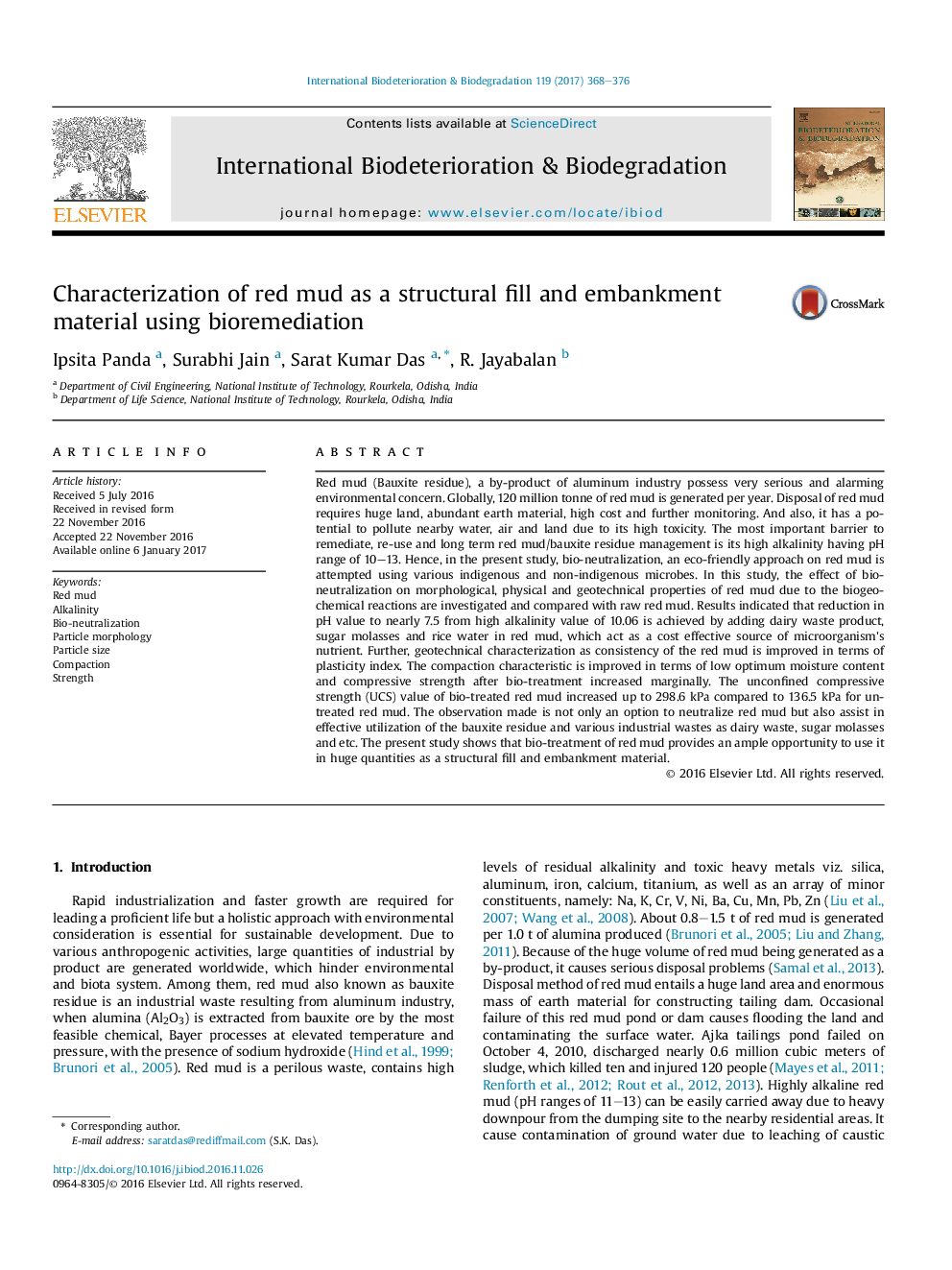| کد مقاله | کد نشریه | سال انتشار | مقاله انگلیسی | نسخه تمام متن |
|---|---|---|---|---|
| 5740463 | 1616298 | 2017 | 9 صفحه PDF | دانلود رایگان |
- Bio-neutralization of bauxite residue using non-indigenous and indigenous bacteria.
- Reduction in pH value to nearly 7.5 from high alkalinity value of 10.06.
- Bioremediated red mud as fill and embankment material.
- Improvements in consistency, compaction and unconfined compressive strength.
Red mud (Bauxite residue), a by-product of aluminum industry possess very serious and alarming environmental concern. Globally, 120 million tonne of red mud is generated per year. Disposal of red mud requires huge land, abundant earth material, high cost and further monitoring. And also, it has a potential to pollute nearby water, air and land due to its high toxicity. The most important barrier to remediate, re-use and long term red mud/bauxite residue management is its high alkalinity having pH range of 10-13. Hence, in the present study, bio-neutralization, an eco-friendly approach on red mud is attempted using various indigenous and non-indigenous microbes. In this study, the effect of bio-neutralization on morphological, physical and geotechnical properties of red mud due to the biogeochemical reactions are investigated and compared with raw red mud. Results indicated that reduction in pH value to nearly 7.5 from high alkalinity value of 10.06 is achieved by adding dairy waste product, sugar molasses and rice water in red mud, which act as a cost effective source of microorganism's nutrient. Further, geotechnical characterization as consistency of the red mud is improved in terms of plasticity index. The compaction characteristic is improved in terms of low optimum moisture content and compressive strength after bio-treatment increased marginally. The unconfined compressive strength (UCS) value of bio-treated red mud increased up to 298.6Â kPa compared to 136.5Â kPa for untreated red mud. The observation made is not only an option to neutralize red mud but also assist in effective utilization of the bauxite residue and various industrial wastes as dairy waste, sugar molasses and etc. The present study shows that bio-treatment of red mud provides an ample opportunity to use it in huge quantities as a structural fill and embankment material.
Journal: International Biodeterioration & Biodegradation - Volume 119, April 2017, Pages 368-376
